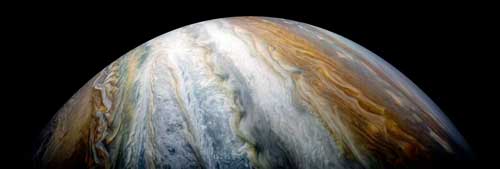 Three papers answer a question that scientists have been asking ever since Galileo first observed the famous stripes of Jupiter: Are the colorful bands just a pretty surface phenomenon, or are they a significant stratum of the planet?
Three papers answer a question that scientists have been asking ever since Galileo first observed the famous stripes of Jupiter: Are the colorful bands just a pretty surface phenomenon, or are they a significant stratum of the planet?
Mar 8th, 2018
Read more
 Together with gravity, the polarization of the quantum vacuum may allow stars to exist in unconventional configurations.
Together with gravity, the polarization of the quantum vacuum may allow stars to exist in unconventional configurations.
Mar 8th, 2018
Read more
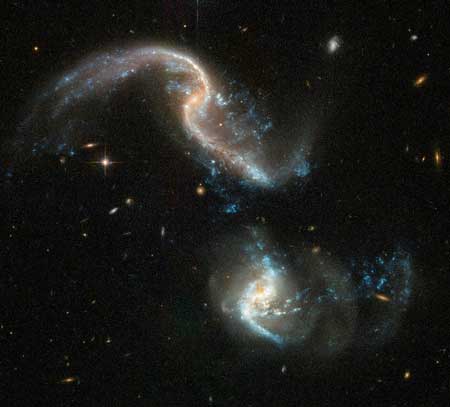 Galaxies are not static islands of stars -- they are dynamic and ever-changing, constantly on the move through the darkness of the Universe. Sometimes, as seen in this spectacular Hubble image of Arp 256, galaxies can collide in a crash of cosmic proportions.
Galaxies are not static islands of stars -- they are dynamic and ever-changing, constantly on the move through the darkness of the Universe. Sometimes, as seen in this spectacular Hubble image of Arp 256, galaxies can collide in a crash of cosmic proportions.
Mar 8th, 2018
Read more
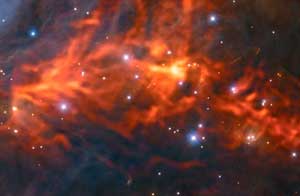 New data from the Atacama Large Millimeter/submillimeter Array (ALMA) and other telescopes have been used to create this stunning image showing a web of filaments in the Orion Nebula. These features appear red-hot and fiery in this dramatic picture, but in reality are so cold that astronomers must use telescopes like ALMA to observe them.
New data from the Atacama Large Millimeter/submillimeter Array (ALMA) and other telescopes have been used to create this stunning image showing a web of filaments in the Orion Nebula. These features appear red-hot and fiery in this dramatic picture, but in reality are so cold that astronomers must use telescopes like ALMA to observe them.
Mar 8th, 2018
Read more
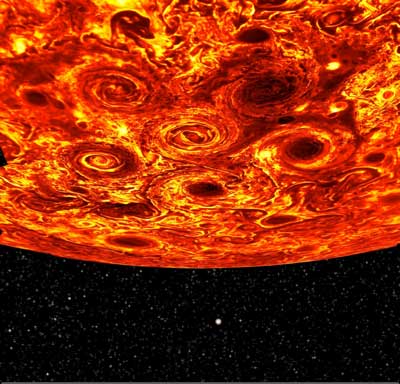 With NASA's Juno spacecraft, scientists have gotten a good look at the top and bottom of the planet for the first time. What they found astounded them: bizarre geometric arrangements of storms, each arrayed around one cyclone over the north and south poles - unlike any storm formation seen in the universe.
With NASA's Juno spacecraft, scientists have gotten a good look at the top and bottom of the planet for the first time. What they found astounded them: bizarre geometric arrangements of storms, each arrayed around one cyclone over the north and south poles - unlike any storm formation seen in the universe.
Mar 7th, 2018
Read more
 Experiments reveal how a hydrocarbon called pyrene could form near stars.
Experiments reveal how a hydrocarbon called pyrene could form near stars.
Mar 7th, 2018
Read more
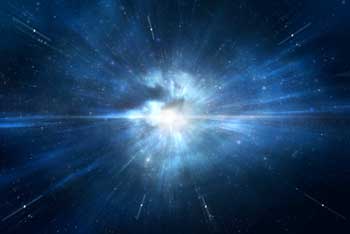 New research extends fundamental thermodynamic theories to describe microscopic systems at high energies, like the universe at the Big Bang.
New research extends fundamental thermodynamic theories to describe microscopic systems at high energies, like the universe at the Big Bang.
Mar 6th, 2018
Read more
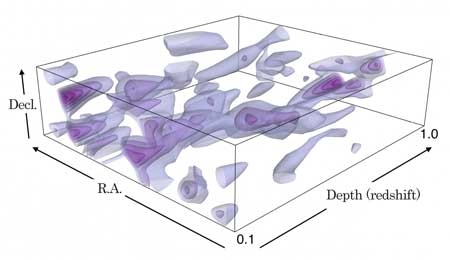 A research team of multiple institutes released an unprecedentedly wide and sharp dark matter map based on the newly obtained imaging data by Hyper Suprime-Cam on the Subaru Telescope. The team located the positions and lensing signals of the dark matter halos and found indications that the number of halos could be inconsistent with what the simplest cosmological model suggests.
A research team of multiple institutes released an unprecedentedly wide and sharp dark matter map based on the newly obtained imaging data by Hyper Suprime-Cam on the Subaru Telescope. The team located the positions and lensing signals of the dark matter halos and found indications that the number of halos could be inconsistent with what the simplest cosmological model suggests.
Mar 2nd, 2018
Read more
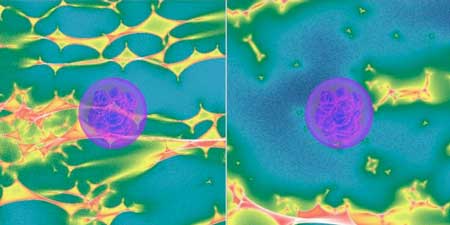 Astrophysicists discovered how to control the 'micolensing' effects of strongly lensed Type 1a Supernovae with supercomputers. Armed with this knowledge they believe they will be able to find 1,000 strongly lensed Type Ia supernovae in realtime from LSST data - that's 20 times more than previous expectations.
Astrophysicists discovered how to control the 'micolensing' effects of strongly lensed Type 1a Supernovae with supercomputers. Armed with this knowledge they believe they will be able to find 1,000 strongly lensed Type Ia supernovae in realtime from LSST data - that's 20 times more than previous expectations.
Mar 1st, 2018
Read more
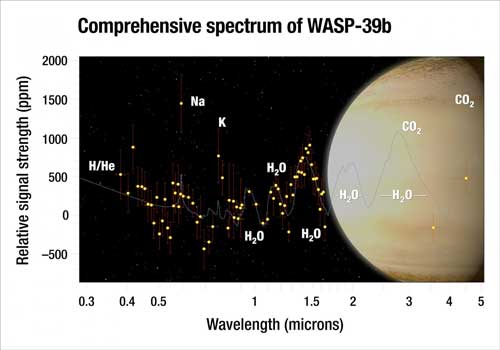 Much like detectives study fingerprints to identify the culprit, scientists used NASA's Hubble and Spitzer space telescopes to find the 'fingerprints' of water in the atmosphere of a hot, bloated, Saturn-mass exoplanet some 700 light-years away.
Much like detectives study fingerprints to identify the culprit, scientists used NASA's Hubble and Spitzer space telescopes to find the 'fingerprints' of water in the atmosphere of a hot, bloated, Saturn-mass exoplanet some 700 light-years away.
Mar 1st, 2018
Read more
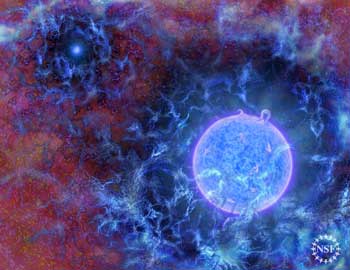 Within 180 million years of the Big Bang, stars were born.
Within 180 million years of the Big Bang, stars were born.
Feb 28th, 2018
Read more
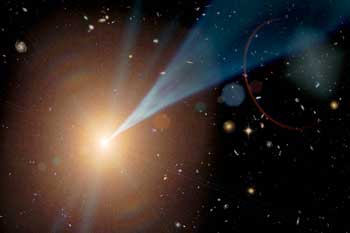 Researchers have discovered seven galaxies that could shake up what astrophysicists thought they knew about how the size of a galaxy - and the black hole at its center - can affect its behavior.
Researchers have discovered seven galaxies that could shake up what astrophysicists thought they knew about how the size of a galaxy - and the black hole at its center - can affect its behavior.
Feb 28th, 2018
Read more
 For the past twelve years, a group of astronomers have been watching the sky carefully, timing pulses of radio waves being emitted by rapidly spinning stars called pulsars, first discovered 50 years ago.
For the past twelve years, a group of astronomers have been watching the sky carefully, timing pulses of radio waves being emitted by rapidly spinning stars called pulsars, first discovered 50 years ago.
Feb 28th, 2018
Read more
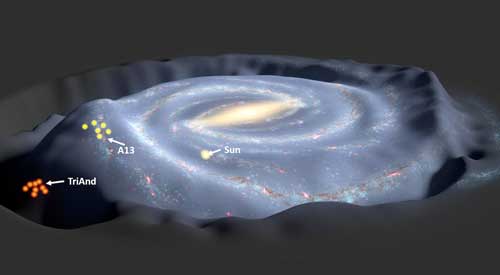 An international team of astronomers has made a surprising discovery about the birthplace of groups of stars located in the halo of our Milky Way galaxy.
An international team of astronomers has made a surprising discovery about the birthplace of groups of stars located in the halo of our Milky Way galaxy.
Feb 26th, 2018
Read more
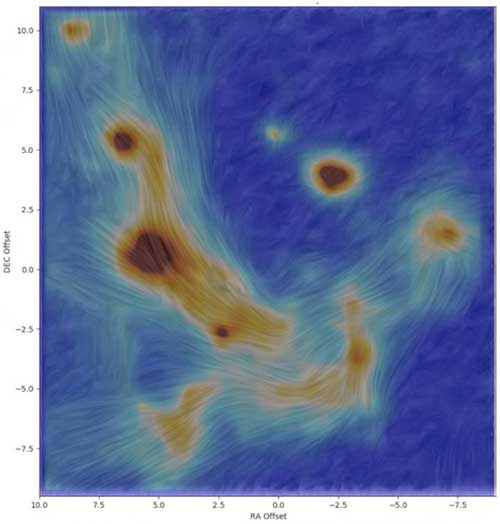 A new study reveals a new high resolution map of the magnetic field lines in gas and dust swirling around the supermassive black hole at the center of our galaxy.
A new study reveals a new high resolution map of the magnetic field lines in gas and dust swirling around the supermassive black hole at the center of our galaxy.
Feb 26th, 2018
Read more
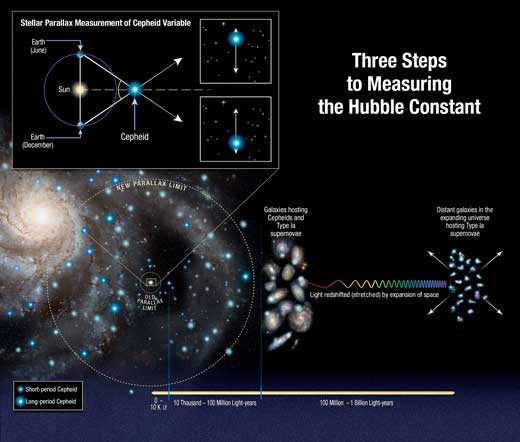 Astronomers have made the most precise measurements of the expansion rate of the universe since it was first calculated nearly a century ago. Intriguingly, the results are forcing astronomers to consider that they may be seeing evidence of something unexpected at work in the universe.
Astronomers have made the most precise measurements of the expansion rate of the universe since it was first calculated nearly a century ago. Intriguingly, the results are forcing astronomers to consider that they may be seeing evidence of something unexpected at work in the universe.
Feb 22nd, 2018
Read more
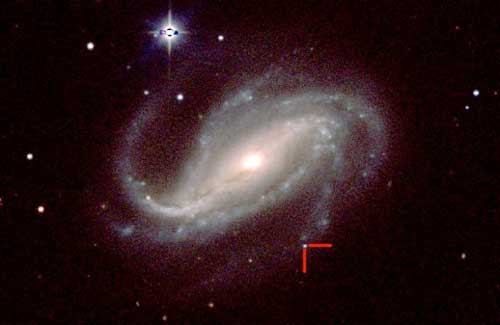 Thanks to lucky snapshots taken by an amateur astronomer in Argentina, scientists have obtained their first view of the initial burst of light from the explosion of a massive star.
Thanks to lucky snapshots taken by an amateur astronomer in Argentina, scientists have obtained their first view of the initial burst of light from the explosion of a massive star.
Feb 21st, 2018
Read more
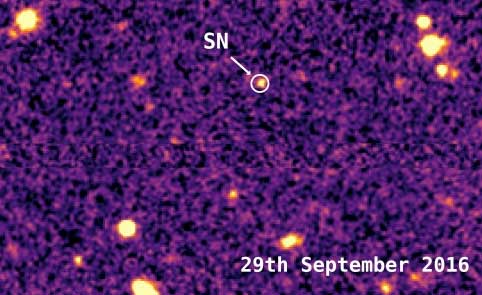 An international team of astronomers has confirmed the discovery of the most distant supernova ever detected - a huge cosmic explosion that took place 10.5 billion years ago, or three-quarters the age of the Universe itself.
An international team of astronomers has confirmed the discovery of the most distant supernova ever detected - a huge cosmic explosion that took place 10.5 billion years ago, or three-quarters the age of the Universe itself.
Feb 19th, 2018
Read more
 Three papers answer a question that scientists have been asking ever since Galileo first observed the famous stripes of Jupiter: Are the colorful bands just a pretty surface phenomenon, or are they a significant stratum of the planet?
Three papers answer a question that scientists have been asking ever since Galileo first observed the famous stripes of Jupiter: Are the colorful bands just a pretty surface phenomenon, or are they a significant stratum of the planet?
 Subscribe to our Space Exploration News feed
Subscribe to our Space Exploration News feed















